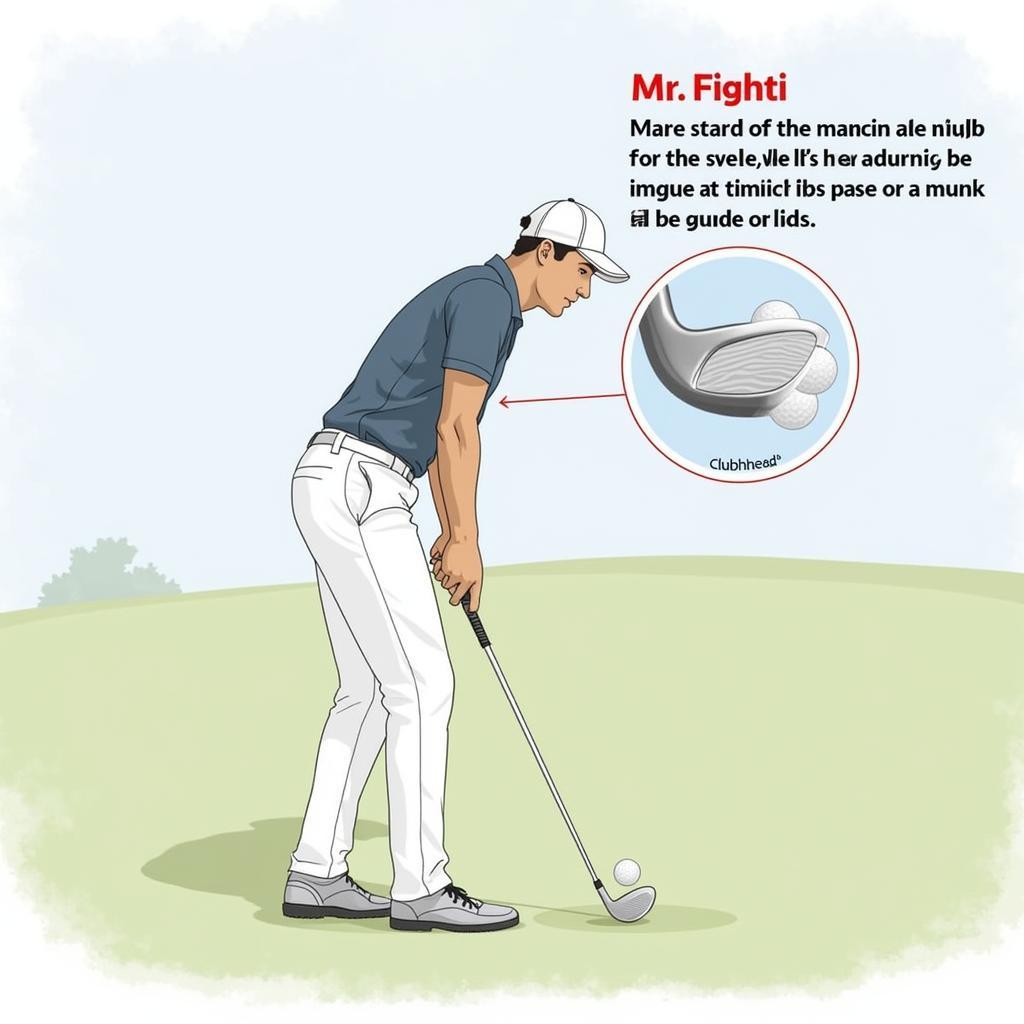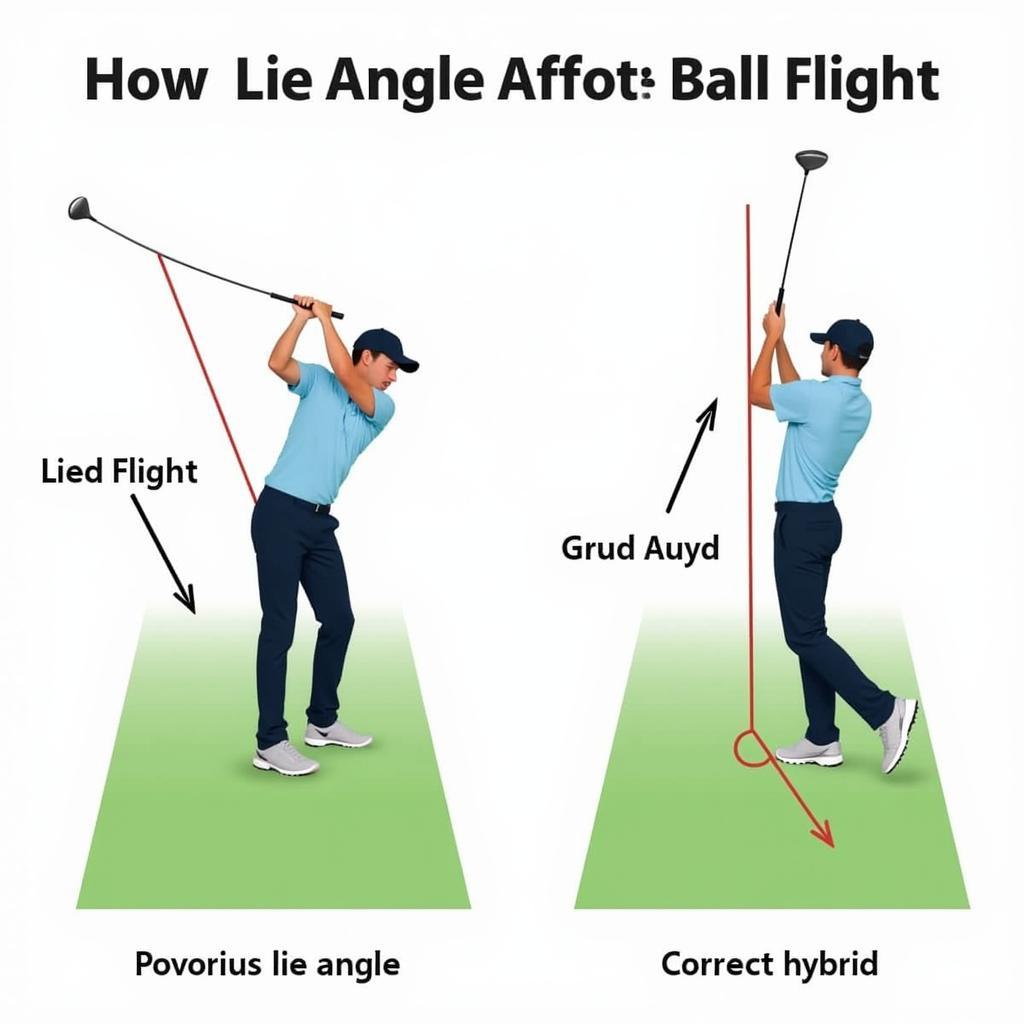Lie angle is a crucial, yet often overlooked, factor in golf club performance. It directly influences the clubface orientation at impact, significantly impacting your ball flight and overall accuracy. Understanding how lie angle works can be the difference between consistently hitting greens and struggling with wayward shots.
Getting the right lie angle can drastically improve your game. It can straighten out those frustrating slices or hooks and help you achieve more consistent ball striking. Later in this article, we’ll delve into how to determine if your clubs have the correct lie angle for your swing. But first, let’s break down the physics behind how lie angle affects your shots.
Understanding Lie Angle
Lie angle is the angle formed between the center of the shaft and the sole of the club when the club is soled correctly at address. It’s measured in degrees, with standard lie angles ranging from about 57 to 64 degrees, depending on the club. A proper lie angle ensures the sole of the club sits flush against the ground at impact, promoting a square clubface and optimal ball flight.
How Lie Angle Influences Direction
The lie angle plays a vital role in determining the direction of your shots. If the lie angle is too upright (greater than standard), the toe of the club will point upwards at address and likely impact, causing the clubface to close and resulting in a shot that curves to the left (a hook for right-handed golfers). Conversely, if the lie angle is too flat (less than standard), the toe of the club will dig into the ground, opening the clubface at impact and leading to a shot that curves to the right (a slice for right-handed golfers).
The Effect on Trajectory
Lie angle also affects the trajectory of your shots, although to a lesser extent than direction. An upright lie angle tends to produce a lower trajectory, while a flat lie angle can lead to a slightly higher trajectory. This is because the clubface orientation influences the dynamic loft at impact.
Determining the Correct Lie Angle
Finding the perfect lie angle is crucial for consistent golf. Several methods can be used to assess your lie angle, including using a lie board, impact tape, or seeking professional club fitting. A professional club fitter can analyze your swing and recommend the optimal lie angle for your clubs.
Why is Lie Angle Important?
Simply put, the correct lie angle promotes solid contact and a square clubface at impact, leading to straighter shots, improved accuracy, and better distance control. It can help you eliminate those frustrating misses and gain more confidence in your game.
 Correct Lie Angle at Setup
Correct Lie Angle at Setup
How Does Backspin Relate to Lie Angle?
While lie angle primarily influences direction and trajectory, it indirectly affects backspin. A square clubface, facilitated by the correct lie angle, is essential for optimizing backspin. Achieving proper backspin allows for greater control and stopping power on the greens. For more information on how to generate backspin, check out this article: how to add backspin in golf.
Common Misconceptions About Lie Angle
A common misconception is that lie angle only affects iron play. However, lie angle is equally important for woods and hybrids, impacting their performance just as significantly.
 Lie Angle for Woods and Hybrids
Lie Angle for Woods and Hybrids
Conclusion
How Does Lie Angle Affect Ball Flight? It plays a pivotal role in determining both the direction and trajectory of your golf shots. A properly fitted lie angle ensures a square clubface at impact, promoting straighter shots, better accuracy, and ultimately, lower scores. Don’t underestimate the importance of this critical club fitting element. Getting your lie angle checked and adjusted can significantly enhance your overall golf game.
FAQ
-
How often should I check my lie angle? It’s recommended to check your lie angle at least once a year or if you notice significant changes in your ball flight.
-
Can I adjust lie angle myself? While minor adjustments can be made, it’s best to consult a professional club fitter for accurate lie angle adjustments.
-
Does lie angle affect distance? Indirectly, yes. A square clubface resulting from the correct lie angle promotes more efficient energy transfer, leading to potentially greater distance.
-
What is the standard lie angle for a 7 iron? Standard lie angles vary between manufacturers, but a typical 7 iron lies around 62-63 degrees.
-
How does lie angle affect different types of shots? The effect of lie angle remains consistent across different shot types, although factors like swing path and angle of attack also influence the ball flight.
-
Can lie angle be adjusted on all clubs? Most modern clubs can have their lie angles adjusted, but some older models or certain club types might have limitations.
-
How much does a lie angle adjustment cost? The cost varies depending on the club and the fitter, but typically ranges from $5 to $20 per club.
Common Lie Angle Scenarios
-
Scenario 1: You consistently slice the ball. This could indicate a lie angle that is too flat.
-
Scenario 2: You constantly hook the ball. This might suggest a lie angle that is too upright.
-
Scenario 3: Your shots feel inconsistent in direction, even with a solid swing. This could also be a sign of an incorrect lie angle.
Further Exploration
For more information on improving your golf game, consider reading our other articles: how to add backspin in golf.
Contact Us
For assistance, please contact us at Phone: 0902476650, Email: [email protected] or visit our address: 139 Đ. Võ Văn Kiệt, Hoà Long, Bà Rịa, Bà Rịa – Vũng Tàu, Việt Nam. We have a 24/7 customer support team.





